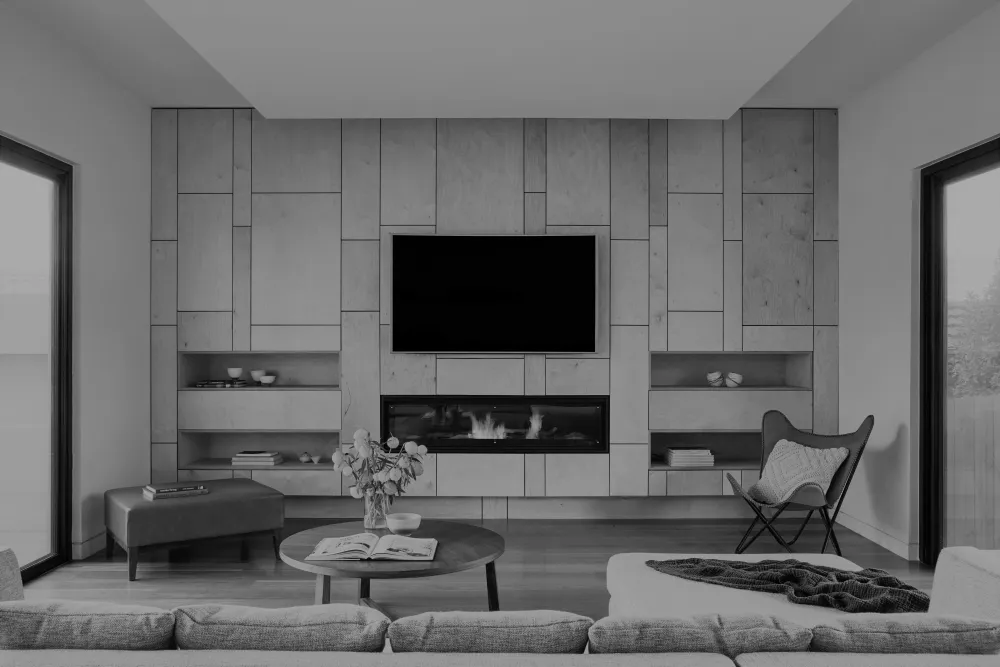Setting up a Smart Home

I once went to an engagement party in a bar that had a “smart” sound system, with a network of wireless speakers throughout the venue. But when the time came to set up the room, the Bluetooth connectivity linking the speakers didn’t want to play ball. Friends pulled out various headphone wires and USB cables, only to be told the smart system was completely wireless. If the iPad and the speakers wouldn’t pair up, there would be no music at all.
The bar owners apologised profusely, saying it had never happened before.
I'm sure anyone setting up a smart home can relate to the frustration of being unable to get devices to talk to one another. It’s often because the wide range of smart devices available operate on many different software codebases. This means homeowners are largely tied to one key provider - and therefore, restricted in choice, both in replacement parts and new additions.
You might fancy one of those amazing new countertop ovens that use high-powered lights to cook to a chef’s standard in a fraction of the time. But you can't launch sous vide mode to make the perfect four-hour beef brisket while you’re sat in a meeting, if it doesn’t work with your phone.
It’s impossible to have a truly smart home without universal interoperability - which is not the usual operating model of big tech players.
The traditional approach involves building a walled garden. That is, a closed ecosystem that encourages reliance on a single provider, for hardware add-ons, apps and content. But for the Internet of Things, the garden walls are coming down, because everyone wants to avoid a VHS / BETAMAX scenario. The big IoT players have united to form the Connectivity Standards Alliance, which in May 2021 bore its first meaningful fruit, Matter.
Matter is a collaboration between 180 companies with a significant stake in the IoT, including Amazon, Apple, Google and Ikea. It’s an industrywide standard protocol, a lingua franca for all manufacturers to ensure smart devices work together. The homeowner will be able to create an ecosystem of their choosing, safe in the knowledge that any new purchase with the distinctive logo - three converging arrows - will be quick and painless to set up.
The head of the Connectivity Standards Alliance, Tobin Richards, says he expects Matter’s logo to become as “ubiquitous” as the WIFI symbol. If it does, we’ll know the smart home revolution has gone fully mainstream.
That’s a little way off yet.
According to the Central Statistics Office’s most recent figures, around 15% of Irish homes use some form of smart technology. But universal operability will see that figure rise. Confidence will grow throughout the market: in consumers, developers, investors, manufacturers and resellers alike. New build property developers, for example, will be sure that the equipment they fit will be welcome and useful.
Matter will also make smart products cheaper to develop, and quicker to bring to market, which will promote more innovation in the sector.
What does this mean for insurance?
More uptake will mean more data, and the more data underwriters can get from homeowners, the more accurately we can price their risk.
Certain types of device, e.g. water leak monitors, are already driving a reduction in claim frequency and severity. Lots of homes in Ireland are adding water leak monitors, but unfortunately, escape of water is still one of the most common claims we see. Even a small leak can cause a lot of damage, so the more homes that have smart water monitors, the better.
There needs to be further evaluation of the risk impact of other devices, which will become clearer as uptake grows.
The key will be motivating a majority of homeowners to share their data, because privacy is one of the biggest concerns. If a home has smart lighting programmed around a household’s habitual movements, of course, that could be very valuable information to criminals.
As homes get smarter and smarter, we may see cybersecurity requirements and assessments coming into policy documentation. Especially for the high-end homes, in much the same way that they are currently required to have a central alarm, or a respected brand of immobiliser fitted to their cars.
At DUAL, we strive to provide the best cover for your home and motor. We support technological advances in the smart devices industry because it works towards a greater good. Reducing frequency and severity allows us to pass savings on to the consumer, and ultimately, provide the most comprehensive policy possible.
Shauna Fogarty is a High Net Worth Underwriter for DUAL Underwriting Ireland DAC. DUAL specialise, amongst other areas, in high net worth personal insurance in Ireland and are backed by AXA XL, a division of AXA, one of the world’s largest insurance groups.
t: 01 6640001 / e:enquiry@dualgroup.ie
DUAL Underwriting Ireland DAC (trading as DUAL Private Client) is regulated by the Central Bank of Ireland. Registered No. 633531. Registered office: 11, Fitzwilliam St. Upr., Dublin 2 DO2 YV66.
Directors: Barry O’Dwyer (Managing), Ralph Snedden (British), Richard Clapham (British).
DUAL Underwriting Ireland DAC is deemed authorised and regulated by the Financial Conduct Authority. Details of the Temporary Permissions Regime, which allows EEA based firms to operate in the UK for a limited period while seeking full authorisation, are available on the Financial Conduct Authority’s website.
This article was first published in Irish Broker Magazine - view the PDF.
